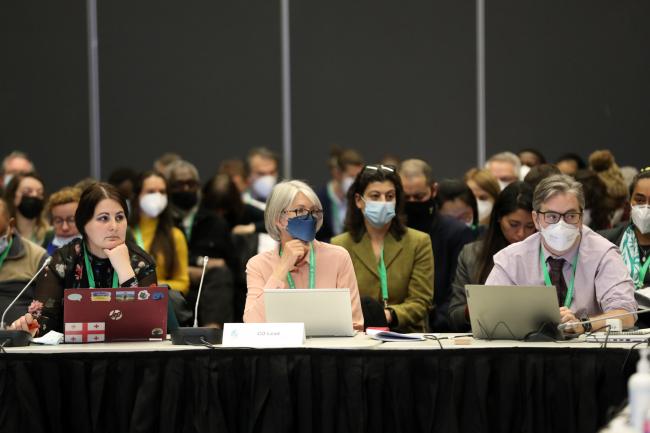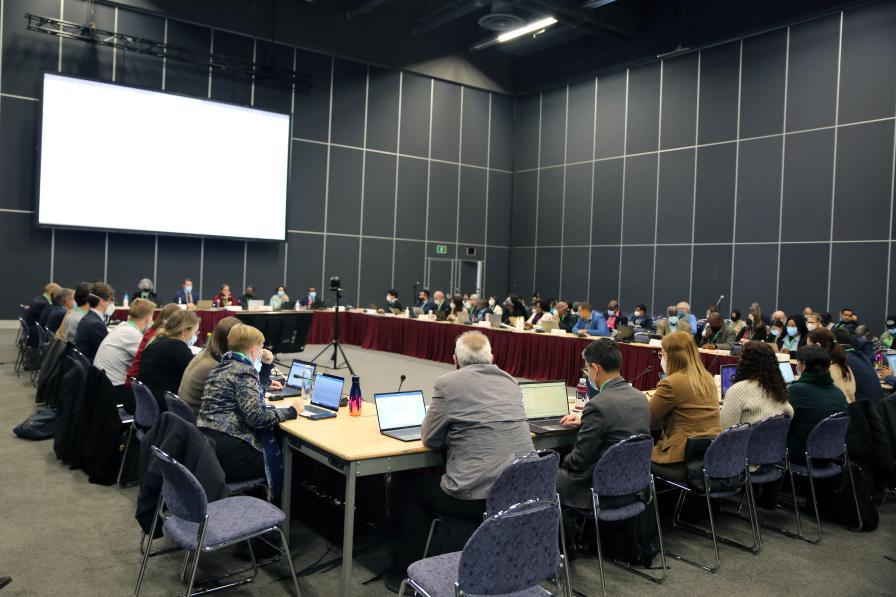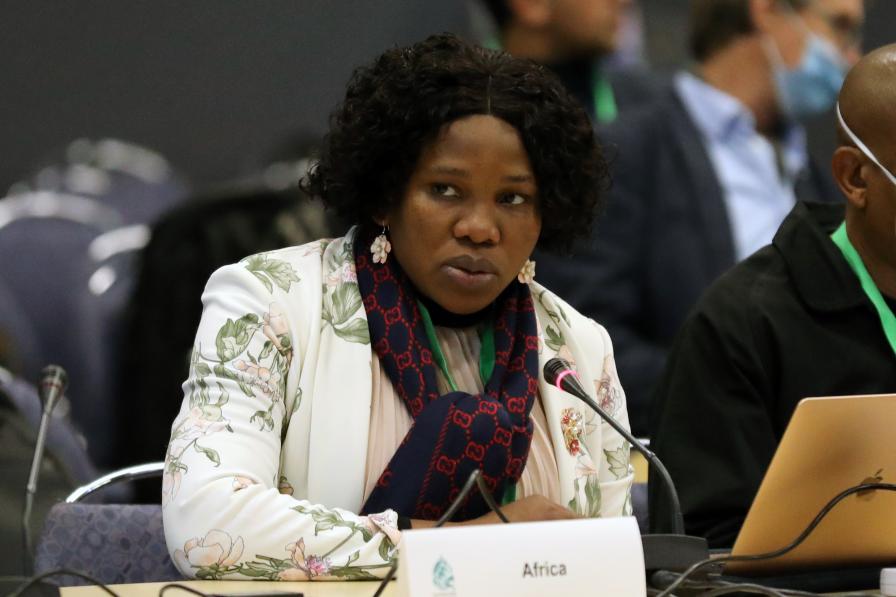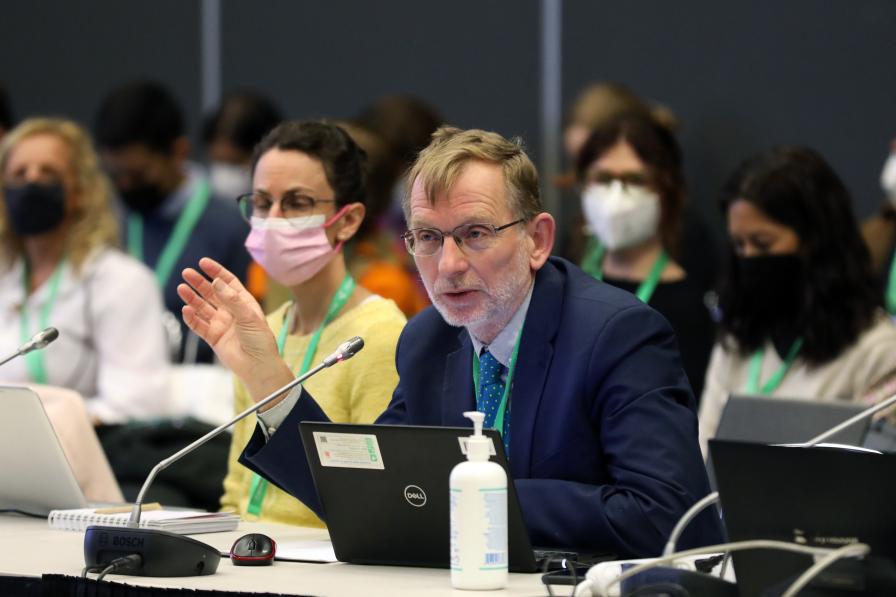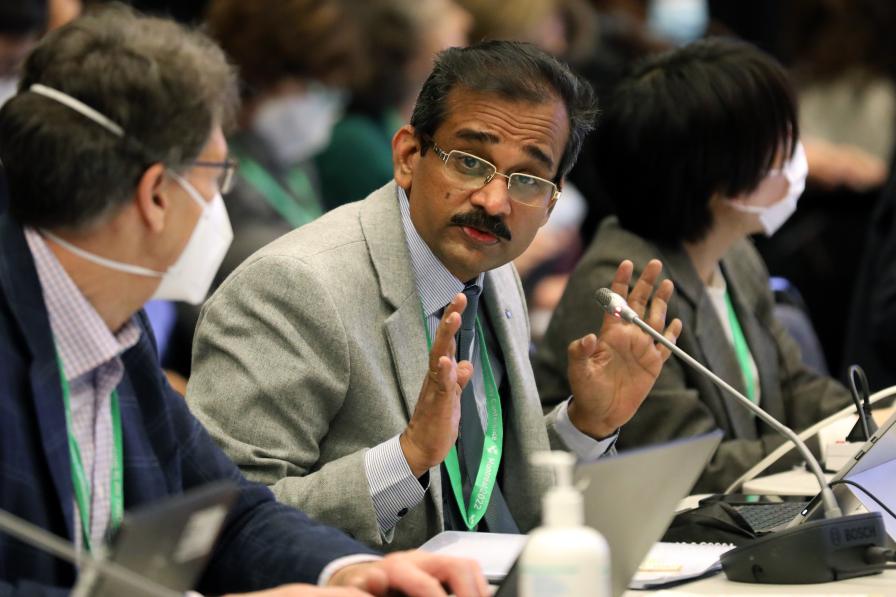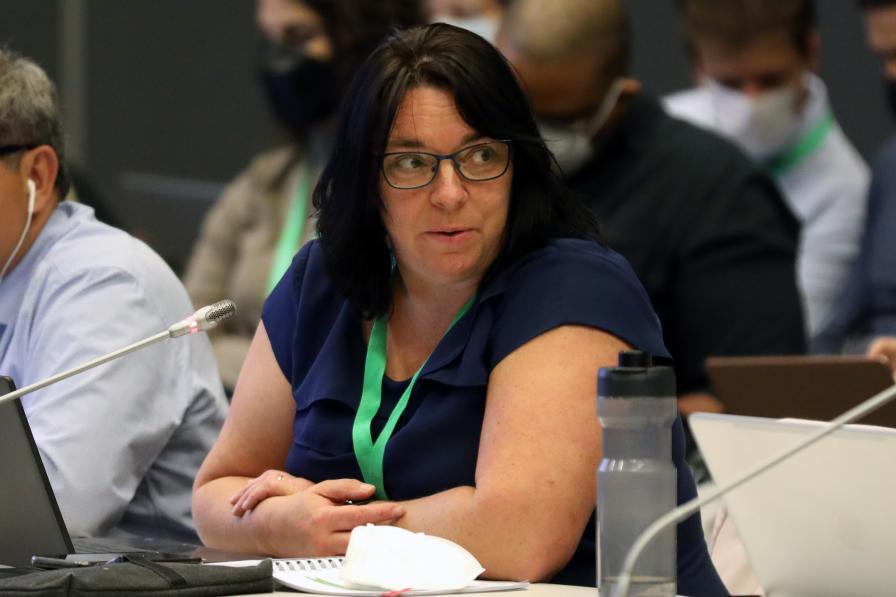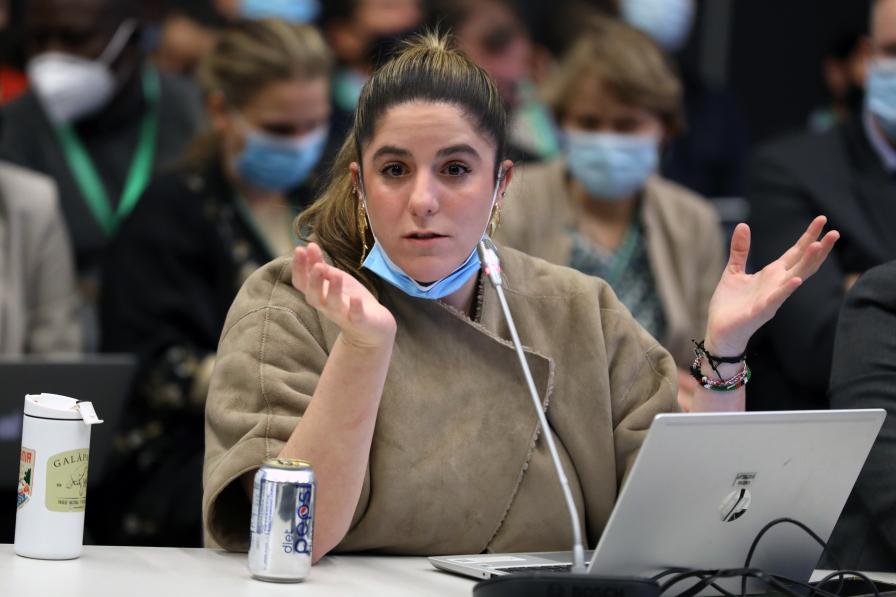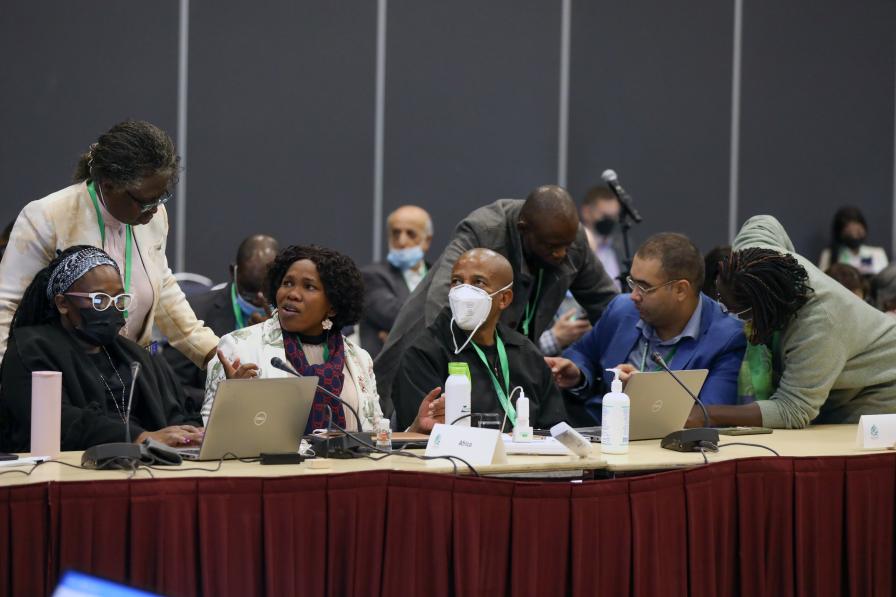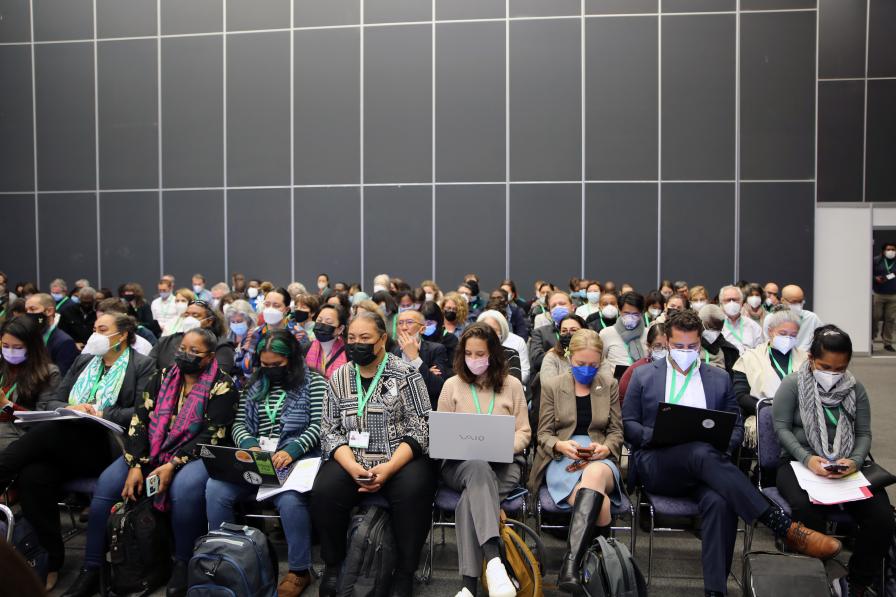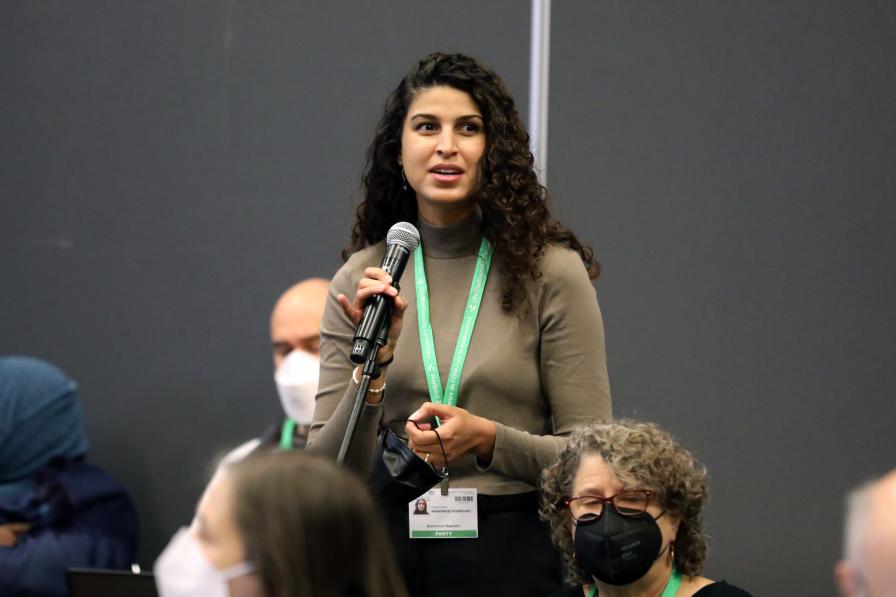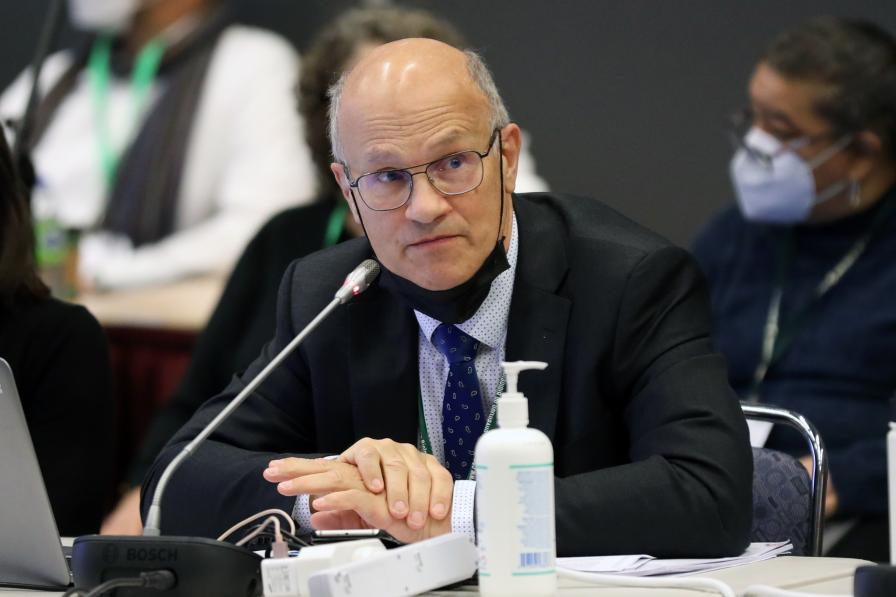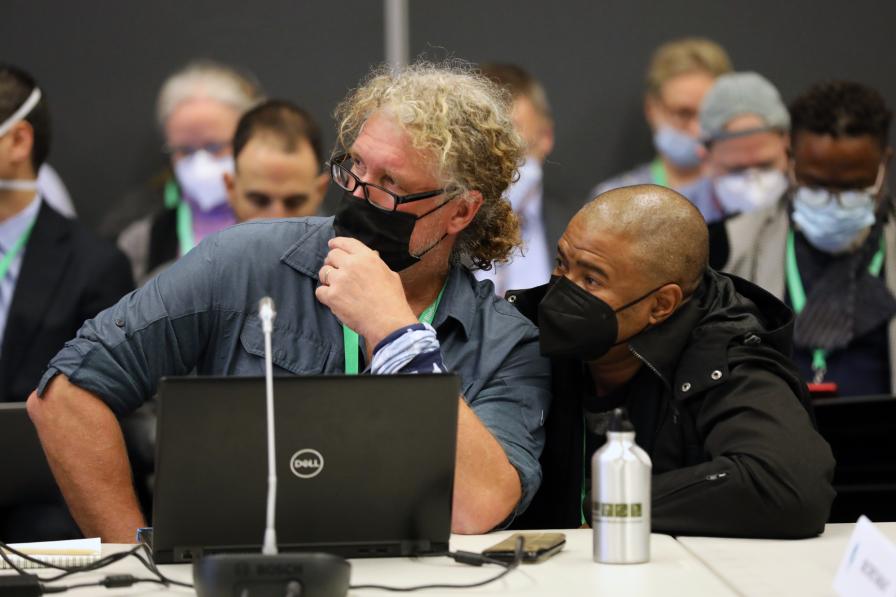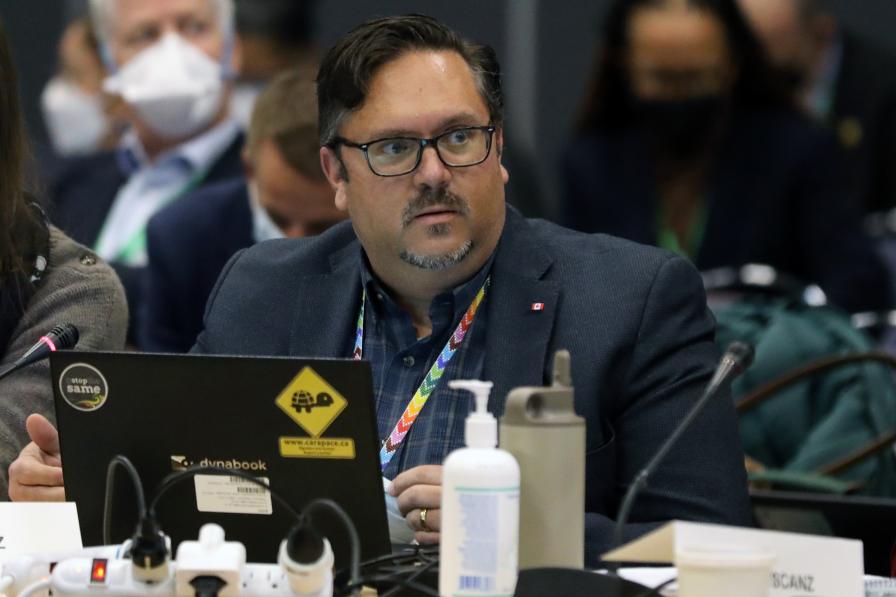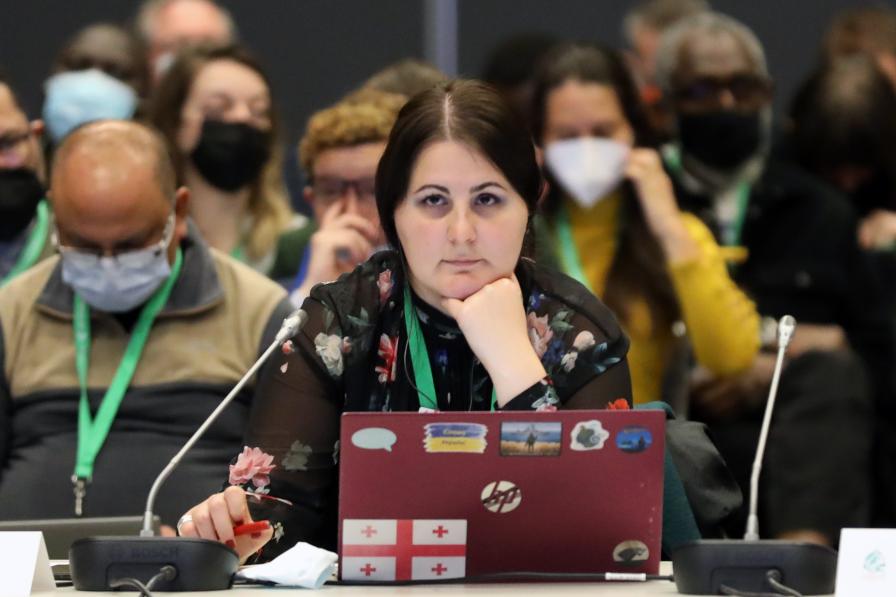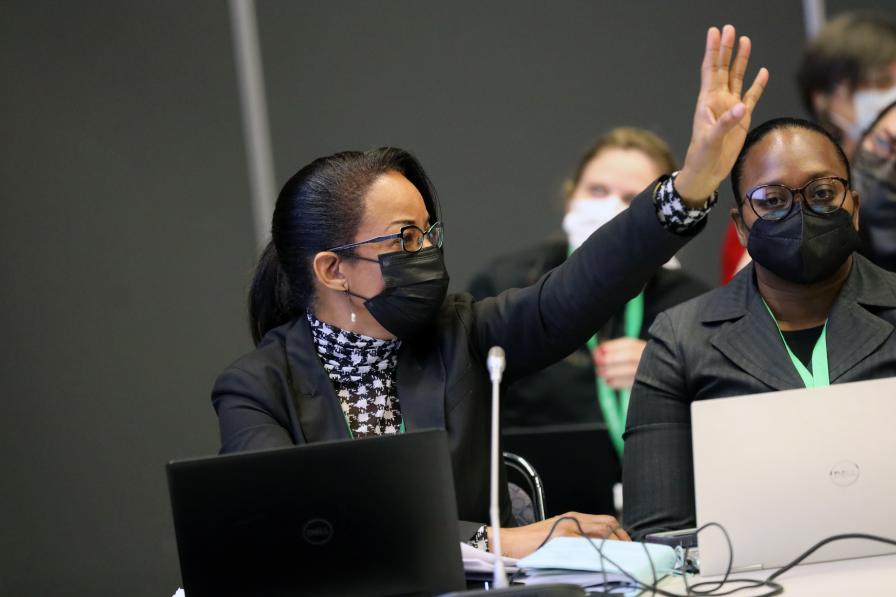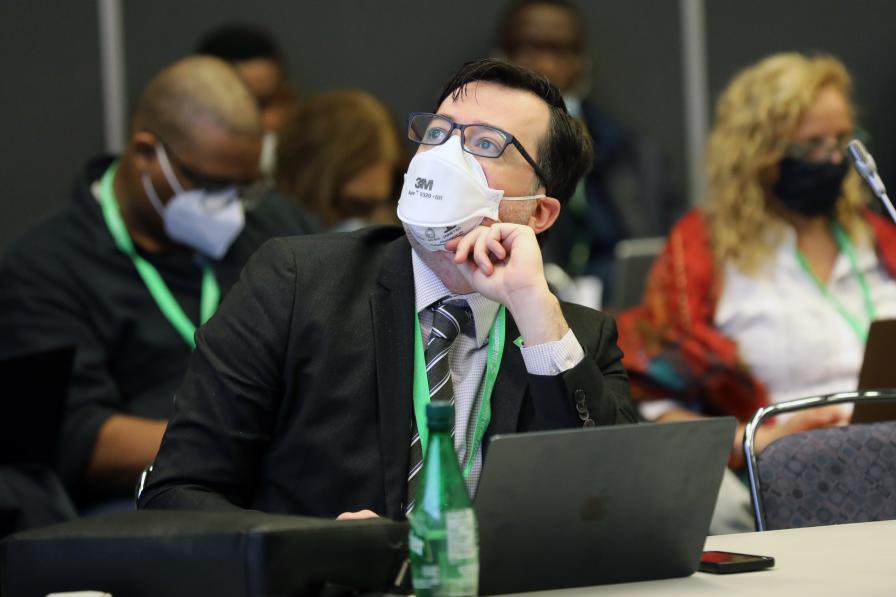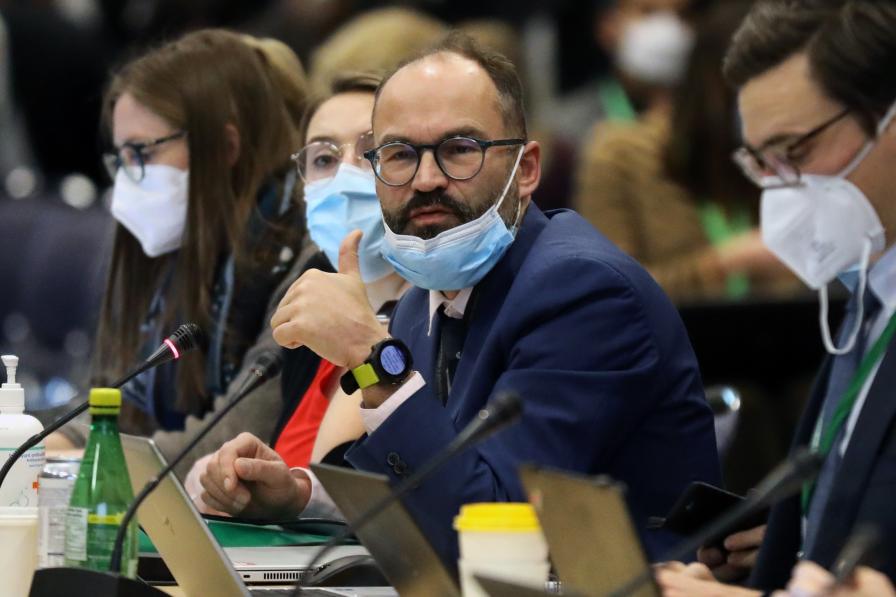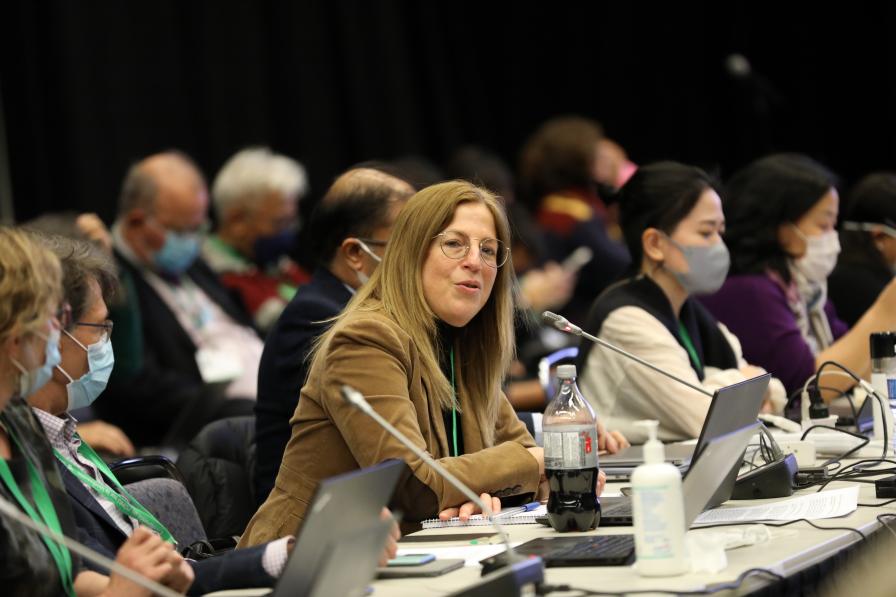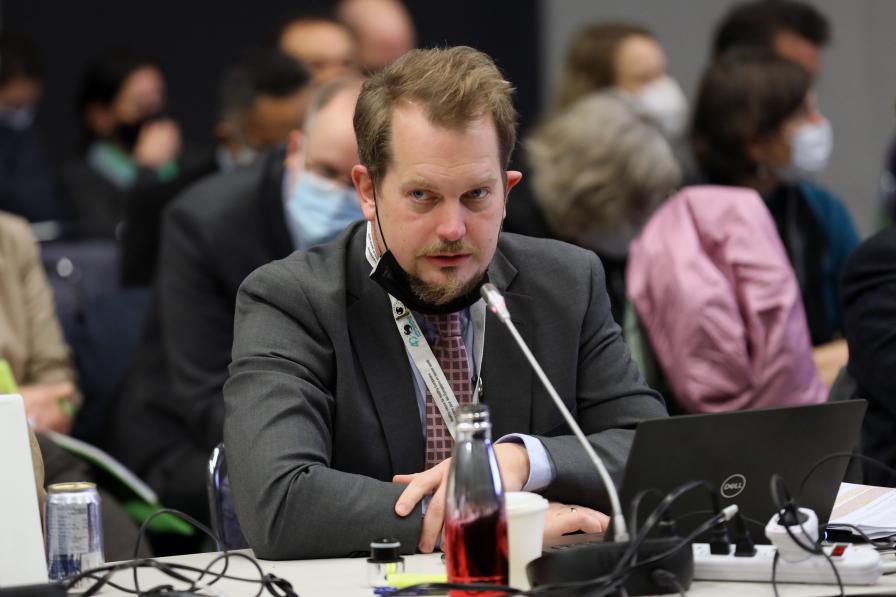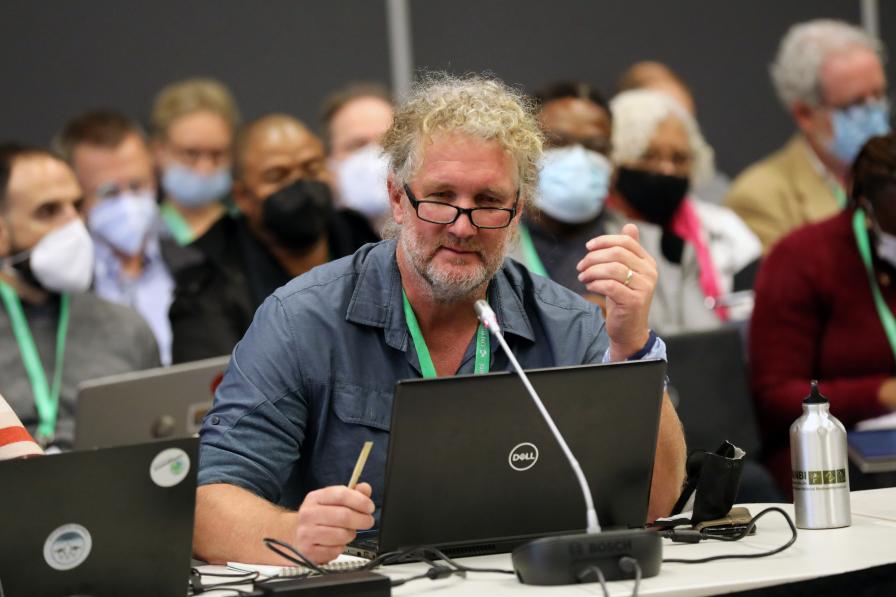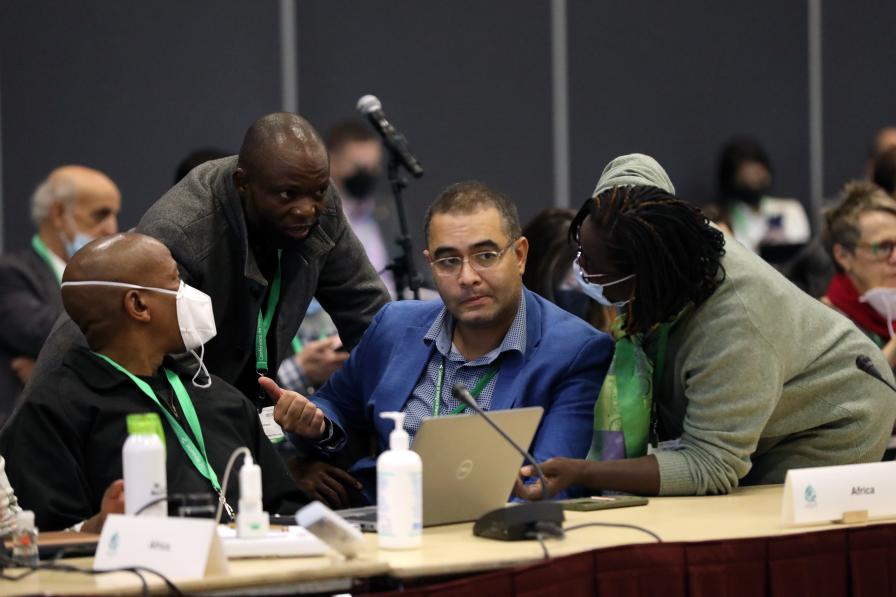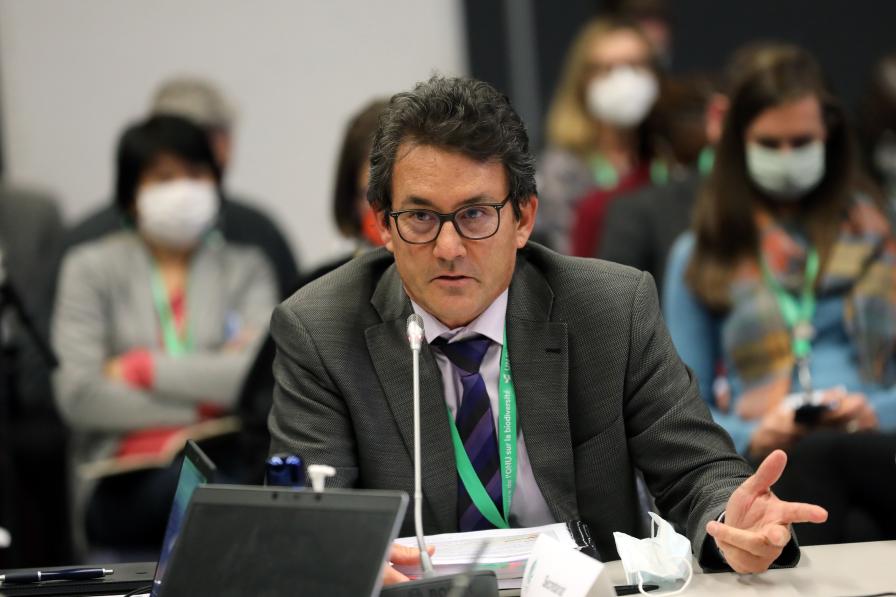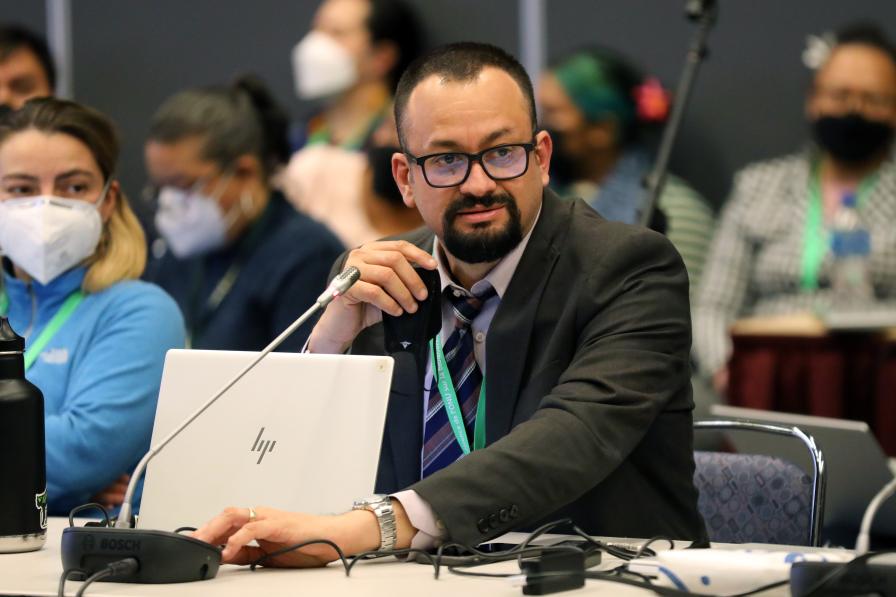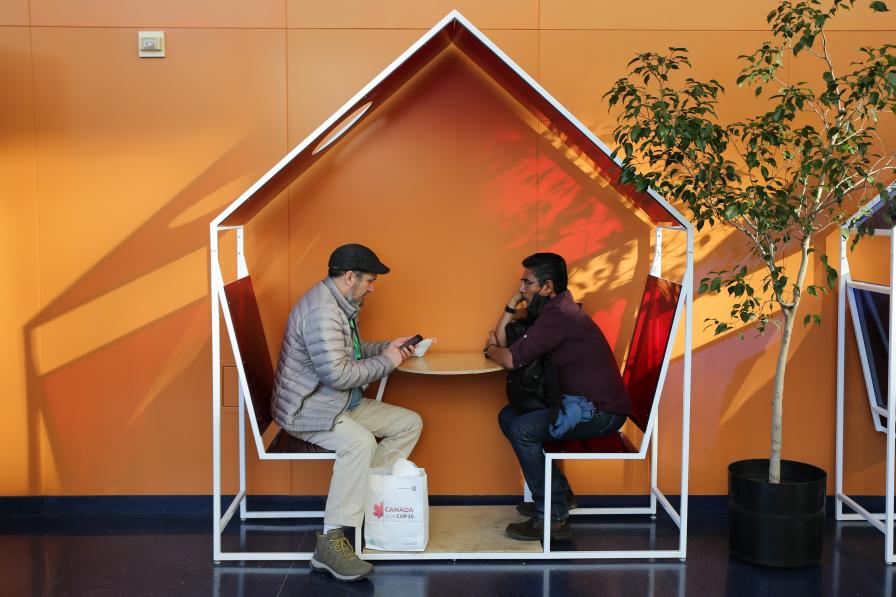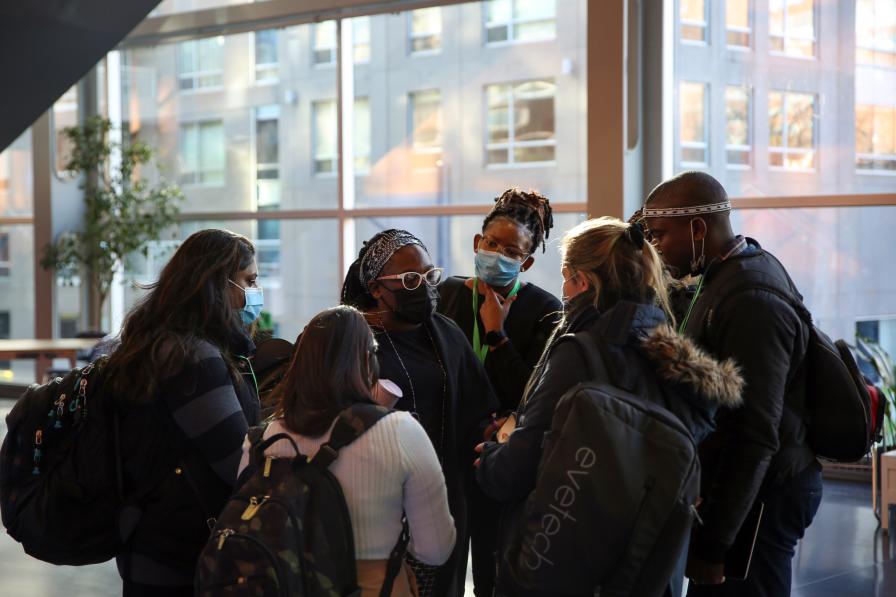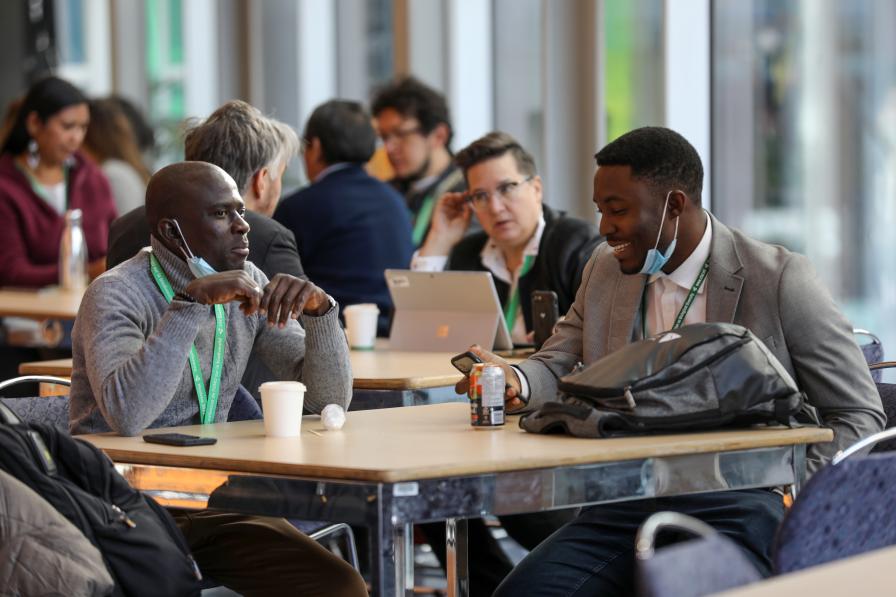Protracted text-based negotiations continued throughout the day in contact and informal groups, deliberating on various sections and targets of the draft global biodiversity framework (GBF). The lack of substantive progress on various GBF sections, and on targets 1 (spatial planning) and 4 (species conservation), had several participants worrying about completion of work, one day before the end of the Working Group meeting.
Want to dive deeper? Read the full Earth Negotiations Bulletin daily report available in English ou en Français.
A contact group guided by co-leads Marie-May Muzungaile (Seychelles) and Carolina Caceres (Canada), continued negotiations on Sections of the draft GBF, including B bis (fundamental premises, or principles, and approaches for implementation), H (implementation and support mechanism), and K (communication, education, awareness, and uptake). Debate focused on, among other issues, references to the rights, worldviews, and lands of Indigenous Peoples and local communities (IPLCs).
A contact group co-led by Teona Karchava (Georgia) and Rosemary Paterson (New Zealand) focused on GBF targets on reducing threats to biodiversity, including targets 1 (spatial planning), 4 (species conservation), and 5 (species overexploitation).
On target 1, delegates generally agreed on the need to ensure participatory integrated biodiversity-inclusive spatial planning and/or other effective management processes addressing land and sea use change. They further made progress towards recognizing the need to maintain ecosystem functions and services, and enhancing ecological connectivity and integrity, while respecting the rights of IPLCs.
On target 4, a lengthy discussion took place on whether the target should focus on all species or threatened species. While delegates ended up compromising on “species, in particular threatened species,” they remained divided on whether to refer to “sustainable” and/or “sustained” management actions. Delegates agreed “to maintain and restore the genetic diversity of native wild and domestic species” and “to effectively manage human-wildlife interactions to minimize human-wildlife conflict for coexistence.”
On target 5, delegates agreed on a compromise on the first part of the target, which aims to “ensure that the exploitation and/or harvesting, trade and use of wild species is sustainable, safe, and legal, preventing overexploitation and minimizing impacts on non-target species and ecosystems.”
Friends of the co-leads groups met in the evening to address digital sequence information and target 1.
A contact group co-led by Anne Teller (EU) and Jorge Murillo (Colombia) also met in the evening, resuming consideration of targets related to tools and solutions for implementation and mainstreaming. The group addressed targets 14 (integrating biodiversity in policies), 15 (practices of business and financial institutions), and 16 (sustainable consumption). Participants further heard a progress report from a friends of the co-leads group on target 17 (biotechnology), noting that, despite progress, disagreements remain. The co-leads developed a revised proposal based on the discussion in the friends of the co-leads group, which will be forwarded to plenary upon parties’ approval.
Discussions continued into the night.
To receive free coverage of global environmental events delivered to your inbox, subscribe to the ENB Update newsletter.
All ENB photos are free to use with attribution. For the United Nations Biodiversity Conference, please use: Photo by IISD/ENB | Mike Muzurakis



